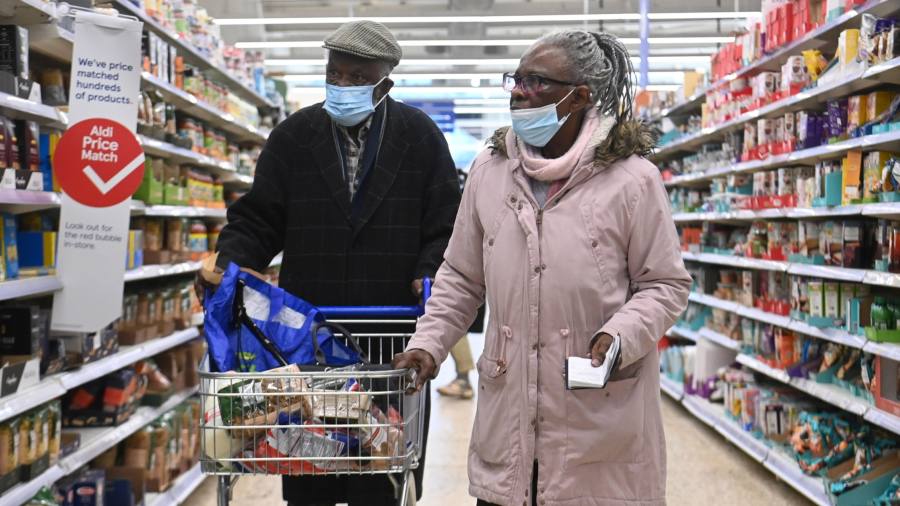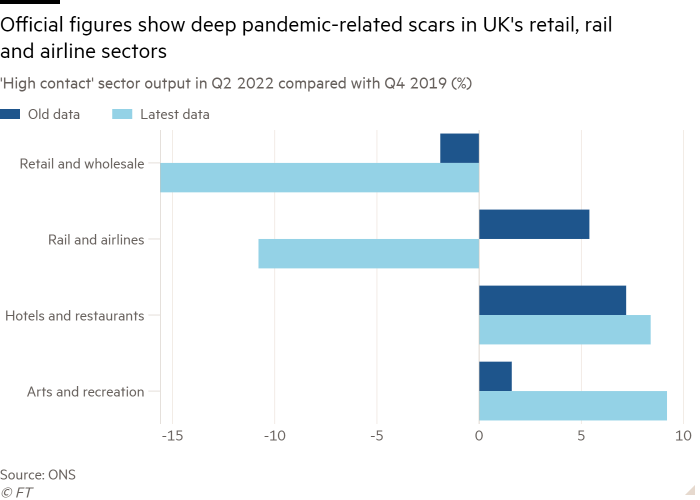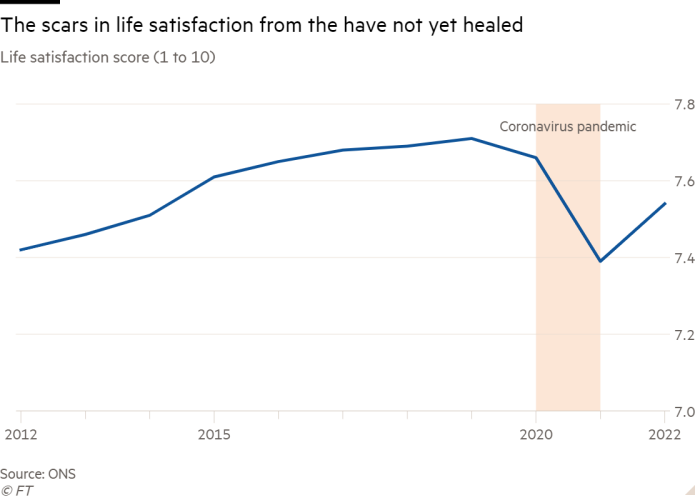
The coronavirus crisis had a larger negative effect on the UK’s retail and transport sectors than previously thought, leaving their contribution to the economy still far short of pre-pandemic levels, according to official data.
Research published on Monday by the Office for National Statistics also found that individuals continued to suffer pandemic-related effects on their quality of life, although there was an improvement on 2021.
The findings highlight the persistent scars from coronavirus that have left the UK economy smaller than before the pandemic and contributed to the £50bn hole in the public finances.
UK prime minister Rishi Sunak and chancellor Jeremy Hunt will seek to plug that gap in the autumn statement on November 17, with further tax rises and public spending increasing more slowly than planned.
In an article on the latest thinking about the pandemic’s effect on the UK economy, ONS officials on Monday heavily revised down the performance of some “high contact” sectors including transport and retail.
In the second quarter of 2022, the contribution of both sectors to gross domestic product remained more than 10 per cent smaller than in the final quarter of 2019, before the onset of Covid-19.

Overall, the ONS estimated that real GDP — measuring the total value of all goods and services produced in the UK and taking inflation into account — was 0.2 per cent smaller in the second quarter compared with pre-pandemic levels.
According to official figures, the UK is the only G7 country whose economic output is still below 2019 levels.
The ONS said a better understanding of distributors’ profit margins in the retail industry — which were lower than previously thought — had reduced the value added by the entire sector to the overall economy. This is measured by the wages and operating profits earned in each sector.
Costs had also risen much more steeply than previously thought in the airline and rail sectors, lowering the value they added.
Other “high contact” sectors including recreation, pubs and restaurants, had not suffered the same problems, the ONS said, as it revised higher their contribution to the overall economy.
In separate research, the agency found the pandemic’s lasting negative effects had also been felt by individuals, after personal wellbeing indicators rose in the year to March 2022 but remained below 2019 levels.

The ONS, which has measured “happiness” for a decade, found a sharp drop in life satisfaction and a rise in anxiety during the pandemic. Most of the happiness measures had improved gradually in the 2010s.
On a scale of one to 10, the average life satisfaction score in 2021-22 was 7.54. That was a rise on the previous year’s level of 7.39, but still below the 2019-2020 score of 7.66.
When asked about their anxiety, happiness and feelings that their lives were worthwhile, people’s scores had improved compared with last year but were still well below pre-Covid levels.
Tim Vizard, research officer at the ONS, said: “While today’s estimates show improvements across the whole UK, the nation’s wellbeing is still not back to where it was before the pandemic.”